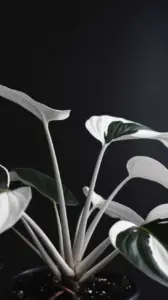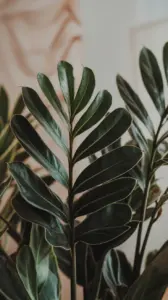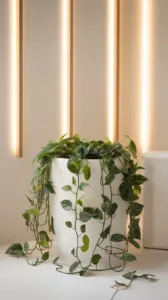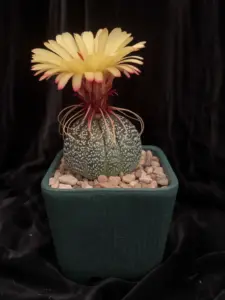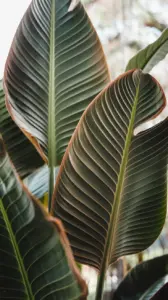Biological Features of Philodendron Florida Ghost
The Philodendron Florida Ghost is a unique and captivating species known for its distinctive leaf morphology. This plant exhibits rapid growth, making it a popular choice among indoor gardeners. Its leaves start as a vibrant green, transitioning to a striking light green or almost white as they mature. Additionally, the leaves can be lobed or unlobed, adding variation to this plant’s appearance.
Habitat and Growth Conditions
In its natural habitat, the Philodendron Florida Ghost thrives in warm, humid climates. It prefers indirect sunlight, as harsh rays can scorch its delicate leaves. Soil moisture is crucial; the plant enjoys well-draining, rich organic matter. Hence, a mix of potting soil and perlite works well.
Features and Characteristics
These plants can grow several feet in height under optimal conditions. They may climb if given support or can be kept as bushy specimens. The impressive size and unique leaf color make the Philodendron Florida Ghost a striking addition to any plant collection.
| Feature | Description |
|---|---|
| Common Name | Philodendron Florida Ghost |
| Leaf Color | Light Green to Almost White |
| Growth Habit | Climbing or Bushy |
| Optimal Light | Indirect Sunlight |
| Soil Type | Well-Draining, Rich Organic Matter |
| Humidity Preference | High Humidity |
Understanding these biological features can help in providing the ideal care for the Philodendron Florida Ghost. This knowledge will ensure that the plant remains healthy and vibrant throughout its life.
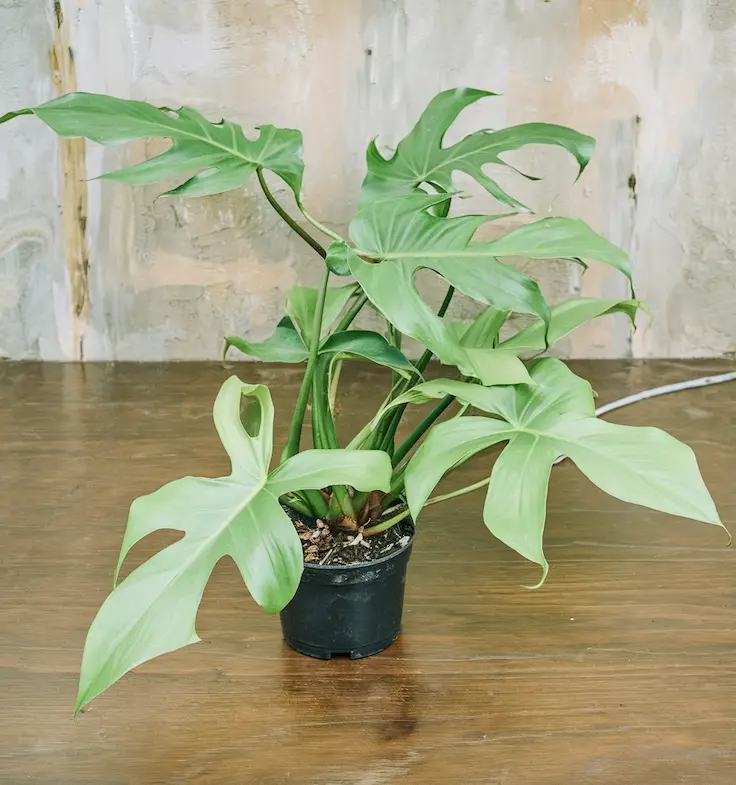
History and Cultural Significance
The Philodendron Florida Ghost is a stunning tropical plant that holds rich historical and cultural significance. Native to the rainforests of South America, it showcases a captivating beauty that has enchanted plant enthusiasts and collectors around the world. Its striking foliage, characterized by unique leaf shapes and colors, often sparks admiration and intrigue.
Historical Background
This particular variety of Philodendron gained prominence in the houseplant scene due to its rarity and stunning appearance. Initially discovered in the wild, the Florida Ghost draws attention with its pale, ghostly leaves that transform over time, making it an exciting addition to any collection. Collectors appreciate its changeable nature as it matures, revealing deep green hues and more complex leaf forms.
Cultural Importance
In many cultures, plants like the Philodendron Florida Ghost symbolize growth, prosperity, and renewal. In tropical regions, these plants are often associated with wellness and environmental harmony. For example, they are frequently used in interior design to create calming spaces that promote relaxation and creativity.
Gardeners and plant lovers also regard this Philodendron as a great air purifier, enhancing indoor air quality. Thus, owning one is not just about aesthetics; it reflects a commitment to environmental consciousness.
- Symbolism: The ghostly foliage represents creativity and resilience.
- Ecological Role: It plays a vital role in its ecosystem, supporting various wildlife.
- Collecting: Enthusiasts seek out unique varieties for their collections.
- Interior Design: It’s often used in homes to achieve a tropical vibe.
Overall, the Philodendron Florida Ghost stands out not only for its physical beauty but also for its cultural resonance. It is celebrated both as a living piece of art and as a symbol of the rich biodiversity of the tropics.

Ideal Growing Conditions for Philodendron Florida Ghost
The Philodendron Florida Ghost thrives in specific conditions that promote its growth and health. To cultivate this unique plant successfully, pay attention to the following factors:
Light Requirements
This plant prefers bright, indirect light. Direct sunlight can scorch the leaves, while too little light can hinder growth. Consider placing it near a window with filtered light for optimal results.
Temperature and Humidity
The ideal temperature for your Philodendron Florida Ghost ranges between 65°F to 80°F. It enjoys a warm environment. Additionally, maintaining high humidity levels, around 60% or more, supports better growth. You can achieve this by misting the leaves or using a humidifier.
Watering Techniques
Water your Philodendron Florida Ghost when the top inch of soil feels dry. Overwatering can lead to root rot, while underwatering causes stress in the plant. Always ensure the pot has good drainage to prevent water buildup. During the growing season, more frequent watering may be necessary.
Soil Type
Utilize a well-draining potting mix that retains moisture but allows excess water to escape. A blend of peat moss, perlite, and orchid bark works well for the Philodendron Florida Ghost. This mixture provides adequate aeration and drainage while retaining necessary nutrients.
| Condition | Optimal Level |
|---|---|
| Light | Bright, indirect light |
| Temperature | 65°F – 80°F |
| Humidity | 60% or higher |
| Watering | When top inch is dry |
| Soil | Well-draining potting mix |
By following these guidelines, the Philodendron Florida Ghost will flourish in your home or garden. Regularly monitor its conditions to ensure it remains healthy and vibrant.
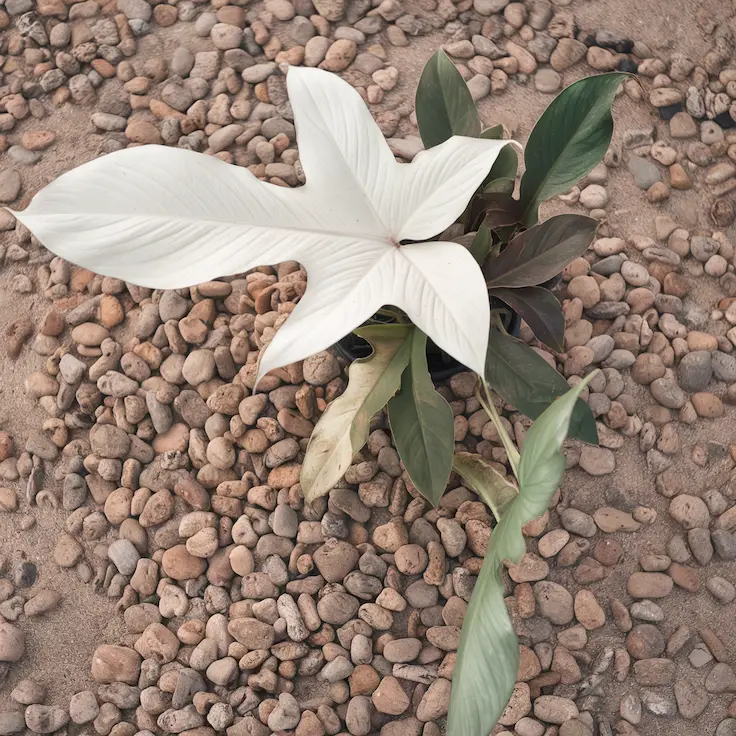
Plant Care and Maintenance
Philodendron Florida Ghost requires specific care to thrive. Its striking foliage makes it a popular choice for indoor plants. Proper attention to light, water, and humidity is essential. With the right conditions, this plant showcases its unique features beautifully.
Light Requirements
Philodendron Florida Ghost prefers bright, indirect light. Direct sunlight can scorch the leaves, leading to damage. If you notice faded colors, consider moving it to a shadier spot. However, too little light can also hinder growth. A well-balanced light environment promotes lush, vibrant leaves.
Watering Needs
Watering is critical for the health of your Philodendron Florida Ghost. Ensure the potting soil is well-draining. Allow the top inch of soil to dry out between waterings. This prevents root rot, a common issue with overwatering. Always check the moisture level to determine if your plant needs water.
Humidity and Temperature
This plant enjoys high humidity. Therefore, consider using a humidity tray or a room humidifier. The ideal temperature range is between 65-80°F (18-27°C). Sudden temperature drops can cause stress to your Philodendron Florida Ghost. Maintaining consistent conditions is crucial for its well-being.
Fertilization
Fertilizing during the growing season helps the Philodendron Florida Ghost flourish. Use a balanced, water-soluble fertilizer. Apply every month from spring to fall. During winter, cut back on feeding, as the plant’s growth slows. Proper nutrition supports vibrant foliage growth.
Pruning and Repotting
Occasional pruning helps maintain the shape and size of your Philodendron Florida Ghost. Remove any yellowing leaves to encourage new growth. Repotting is necessary every 1-2 years or when it outgrows its container. Choose a pot one size larger and fresh potting soil.
Common Pests and Problems
Like many houseplants, the Philodendron Florida Ghost can attract pests. Watch for spider mites and aphids. Regularly inspect the leaves for signs of infestation. Treat any issues promptly with insecticidal soap or neem oil. Keeping your plant healthy can significantly reduce pest problems.
- Bright, indirect light is ideal for growth.
- Allow the soil to dry slightly before watering.
- Maintain high humidity for best results.
- Fertilize monthly during the growing season.
- Prune regularly to encourage bushy growth.
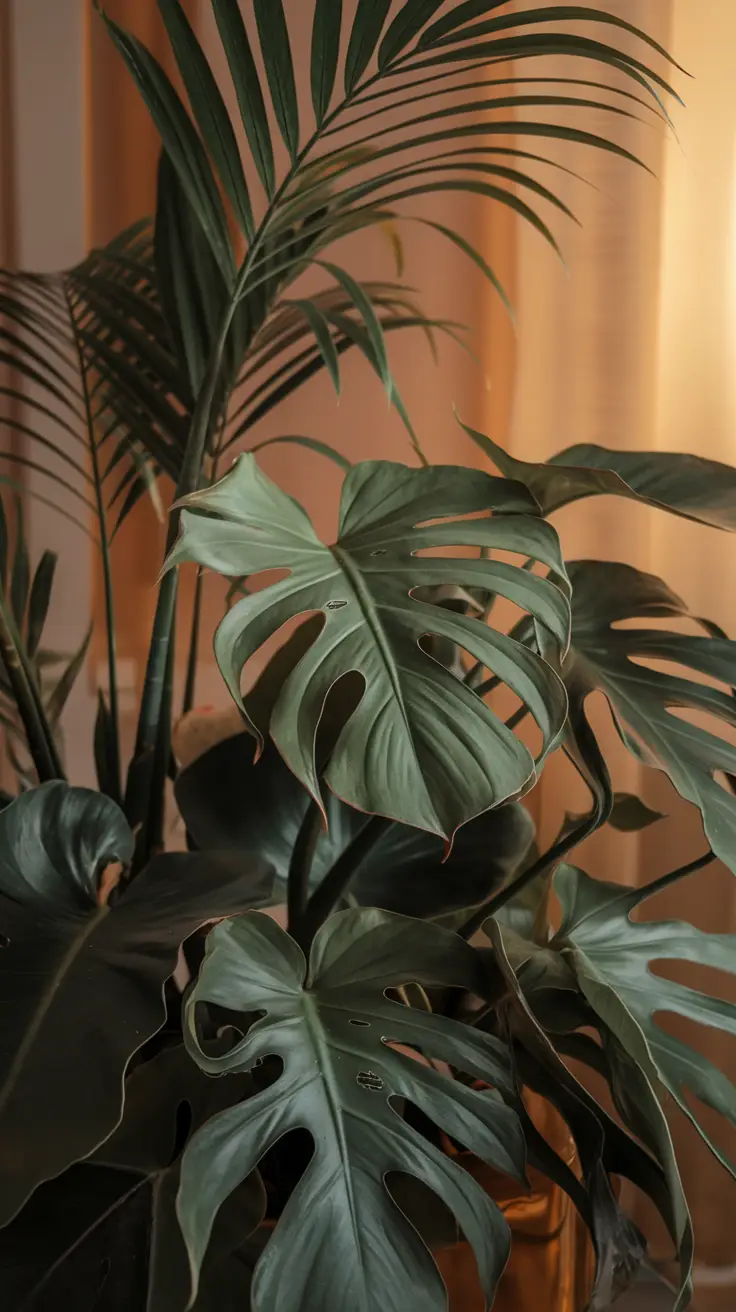
Propagation Techniques for Philodendron Florida Ghost
Propagation is essential for anyone looking to expand their collection of the stunning Philodendron Florida Ghost. This plant can be comfortably propagated through various methods, predominantly through stem cuttings and division. Each technique offers unique advantages and allows enthusiasts to enjoy this exquisite plant in different spaces.
Stem Cuttings
Stem cuttings are one of the most popular methods of propagating the Philodendron Florida Ghost. To begin, choose a healthy stem with a minimum of two leaves. Ensure that the cutting is between 4 to 6 inches long. After that, remove any lower leaves to expose the node, which is crucial for root development.
Next, place the cutting in water or a well-draining soil mix. If you opt for water propagation, change the water weekly to prevent stagnation. Roots will typically develop within 2 to 6 weeks, depending on the environment.
Division
Another effective method is division. This technique is particularly useful for mature plants. First, carefully remove the plant from its pot. Gently separate the roots and ensure that each section has at least one healthy growth point. Re-pot the divided sections in fresh soil.
When using division, it’s important to keep the newly potted plants in a humid environment until they establish roots again. This can be achieved with a humidity dome or by placing a plastic bag over the pot.
Overall, both stem cuttings and division are viable propagation techniques for the Philodendron Florida Ghost. They provide opportunities for plant enthusiasts to multiply their plants successfully and share them with others. These methods ensure the continued growth and presence of this unique and beautiful plant in various homes.
Common Problems and Solutions
The Philodendron Florida Ghost is a beautiful houseplant, but it can face several challenges. Understanding its common problems helps maintain its health. Below are frequent issues along with practical solutions.
Pests and Infestations
Common pests include spider mites, mealybugs, and aphids. They can damage foliage and hinder growth. To control these pests, regularly inspect your plant for signs of infestation.
- For spider mites, increase humidity around the plant.
- Use insecticidal soap for mealybugs.
- Introduce natural predators like ladybugs for aphids.
Improper Watering
Overwatering or underwatering can lead to significant health issues for the Philodendron Florida Ghost. Overwatering causes root rot, while underwatering can result in wilting and leaf drop.
- Always check the top inch of the soil. If it feels dry, it’s time to water.
- Ensure your pot has drainage holes to prevent excess water buildup.
Light Requirements
Lighting is crucial for this plant. It thrives in bright, indirect light. Insufficient light may lead to leggy growth and yellowing leaves.
- Place the plant near a window with filtered sunlight.
- Avoid direct sunlight, as it can scorch the leaves.
Nutrient Deficiency
Lack of essential nutrients affects the overall health of Philodendron Florida Ghost. Yellowing leaves or slowed growth can indicate nutrient deficiencies.
- Fertilize every month during the growing season with a balanced fertilizer.
- Consider using a diluted liquid fertilizer to avoid burning the roots.
Environmental Stress
Changes in temperature and humidity can also impede growth. This plant prefers a stable environment, away from drafts and sudden temperature changes.
- Maintain temperatures between 65°F and 85°F.
- Keep humidity levels above 50%, especially in winter.
| Problem | Solution |
|---|---|
| Pests | Inspect regularly, use insecticidal soap. |
| Watering Issues | Check soil moisture, prevent root rot. |
| Light Problems | Provide filtered sunlight, avoid direct light. |
| Nutrient Deficiency | Fertilize monthly, use diluted solutions. |
| Environmental Stress | Ensure stable temperatures and humidity. |
By following these guidelines, you can address the common problems associated with the Philodendron Florida Ghost. Regular maintenance and care will ensure a thriving plant in your home.
Seasonal Care Adjustments
Philodendron Florida Ghost requires different care depending on the season. During spring and summer, this plant thrives in warmer temperatures. It’s essential to maintain humidity levels above 50%. Regular watering is necessary, but ensure the soil drains well. Avoid waterlogging, as it can lead to root rot.
Autumn and Winter Care
As temperatures drop in autumn, reduce watering frequency. The plant’s growth slows down, requiring less moisture. Place your Philodendron Florida Ghost in a location with bright, indirect light. Low light can affect its growth and color.
- Water less frequently in colder months.
- Maintain humidity with a humidifier.
- Bring indoors if temperatures drop below 60°F.
- Avoid fertilizing in winter.
By making these adjustments, you ensure a healthy Philodendron Florida Ghost all year round. This plant can be sensitive to rapid changes, so keep an eye on its condition. Consistent care leads to robust growth and vibrant leaves.
Microclimate Setup Tips
Creating the right microclimate is essential for the health of your Philodendron Florida Ghost. These plants thrive in specific environmental conditions. They prefer high humidity and moderate temperatures. To ensure optimal growth, consider the following tips.
Humidity Levels
Philodendron Florida Ghost enjoys humidity levels between 60% to 80%. You can achieve this by:
- Using a humidifier in the room
- Placing a pebble tray filled with water under the pot
- Grouping plants together to create a humid microclimate
Temperature Control
This plant prefers temperatures between 65°F and 80°F (18°C – 27°C). Keep the following points in mind:
- Avoid exposing the plant to drafts or sudden temperature changes
- Place it away from heating vents or cold windows
Lighting Requirements
Philodendron Florida Ghost thrives in bright, indirect light. For best results:
- Use sheer curtains if natural light is too intense
- Rotate the plant every few weeks for even exposure
By following these tips, you can create a suitable microclimate that will help your Philodendron Florida Ghost flourish and display its stunning foliage. Maintaining the right conditions will lead to healthier, more resilient plants, ultimately enhancing your indoor jungle.
Frequently Asked Questions
The Philodendron Florida Ghost is a striking and unique plant that appeals to many enthusiasts. Commonly, people wonder about its care requirements. This plant thrives in bright, indirect light. Adequate humidity levels are also crucial for its growth and coloration. Watering should be done when the top inch of soil is dry to ensure optimal health.
Another popular question revolves around its propagation. You can easily propagate the Florida Ghost through stem cuttings. Ensure each cutting includes a node for successful rooting. Additionally, pests can be a concern. Regularly inspect your plant for any signs of infestation, like spider mites or mealybugs.
When it comes to fertilization, use a balanced fertilizer during the growing season for the best results. Fertilizing every 4-6 weeks can enhance its growth. Lastly, some owners ask about toxicity. The Florida Ghost is toxic to pets if ingested, so keep it out of reach of curious animals.
Summary and Recommendations
The Philodendron Florida Ghost stands out for its unique and beautiful foliage. This plant is appreciated by many for its striking appearance and ease of care. It thrives in bright, indirect light and requires well-draining soil. Regular watering is essential, but avoid over-watering. Maintaining humidity levels around 60% can enhance its growth and vitality.
When considering a Philodendron Florida Ghost for your collection, it’s important to place it in a spot with enough light. This allows the plant to flourish while maintaining its vibrant colors. Additionally, regularly wiping the leaves ensures they remain dust-free, allowing for optimal photosynthesis.
Fertilizing during the growing season will support its growth. Using a balanced fertilizer once a month will suffice. Furthermore, be vigilant about pests such as spider mites and mealybugs. Regular checks will help in managing any potential infestations effectively.
In summary, the Philodendron Florida Ghost is an excellent choice for both new and experienced plant enthusiasts. With proper care, it will thrive and become a stunning centerpiece in your indoor garden.

